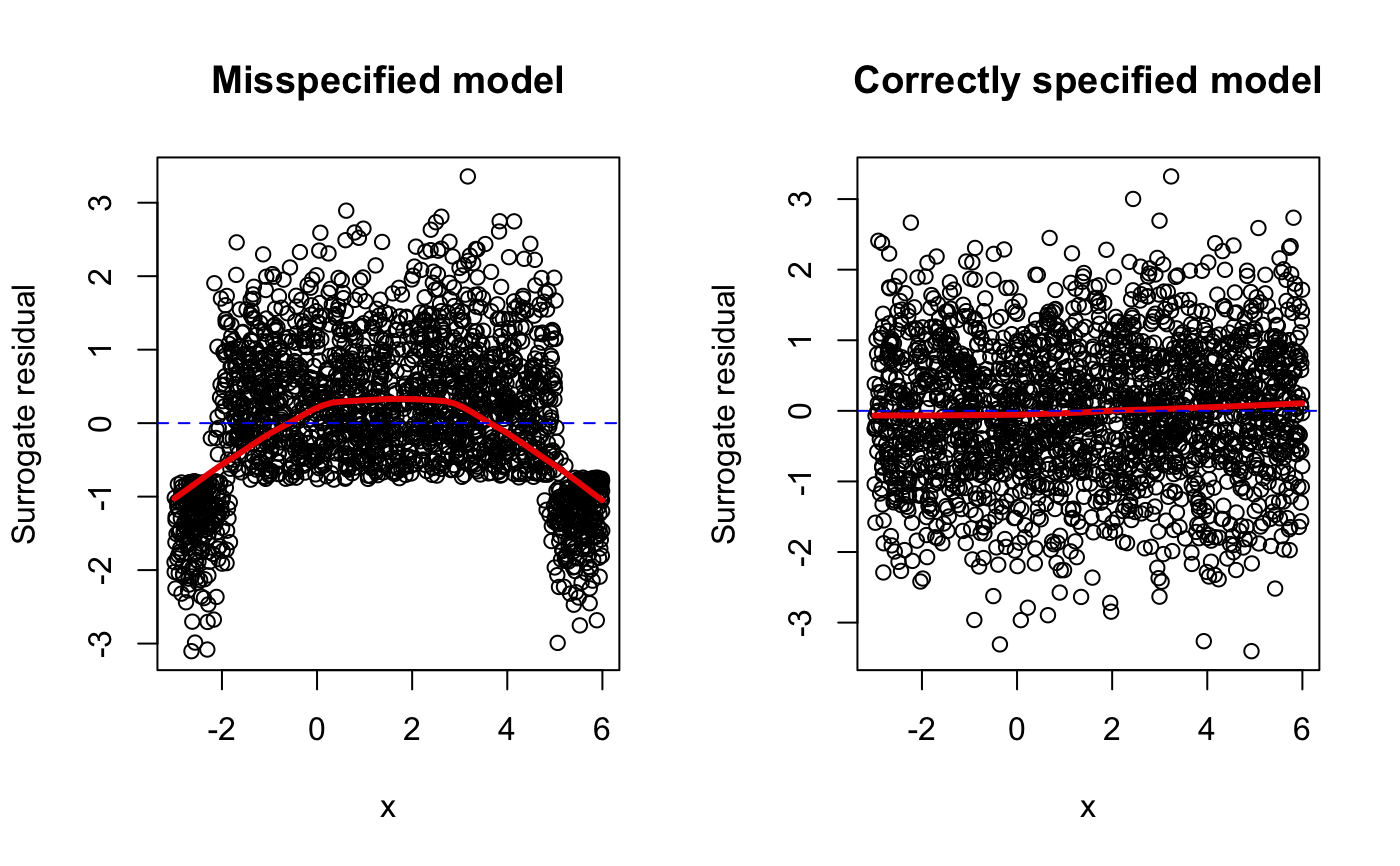Simulate surrogate response values for cumulative link regression models using the latent method described in Liu and Zhang (2017).
resids(object, nsim = 1L, method = c("latent", "jitter"), jitter.scale = c("response", "probability"), ...)
Arguments
| object | |
|---|---|
| nsim | Integer specifying the number of bootstrap replicates to use.
Default is |
| method | Character string specifying which method to use to generate the
surrogate response values. Current options are |
| jitter.scale | Character string specifyint the scale on which to perform
the jittering whenever |
| ... | Additional optional arguments. (Currently ignored.) |
Value
A numeric vector of class c("numeric", "surrogate") containing
the simulated surrogate response values. Additionally, if nsim > 1,
then the result will contain the attributes:
boot_repsA matrix with
nsimcolumns, one for each bootstrap replicate of the surrogate values. Note, these are random and do not correspond to the original ordering of the data;boot_idA matrix with
nsimcolumns. Each column contains the observation number each surrogate value corresponds to inboot_reps. (This is used for plotting purposes.)
Note
Surrogate response values require sampling from a continuous distribution;
consequently, the result will be different with every call to
surrogate. The internal functions used for sampling from truncated
distributions are based on modified versions of
rtrunc and qtrunc.
For "glm" objects, only the binomial() family is supported.
References
Liu, Dungang and Zhang, Heping. Residuals and Diagnostics for Ordinal Regression Models: A Surrogate Approach. Journal of the American Statistical Association (accepted). URL http://www.tandfonline.com/doi/abs/10.1080/01621459.2017.1292915?journalCode=uasa20
Nadarajah, Saralees and Kotz, Samuel. R Programs for Truncated Distributions. Journal of Statistical Software, Code Snippet, 16(2), 1-8, 2006. URL https://www.jstatsoft.org/v016/c02.
Examples
# Generate data from a quadratic probit model set.seed(101) n <- 2000 x <- runif(n, min = -3, max = 6) z <- 10 + 3 * x - 1 * x^2 + rnorm(n) y <- ifelse(z <= 0, yes = 0, no = 1) # Scatterplot matrix pairs(~ x + y + z)# Setup for side-by-side plots par(mfrow = c(1, 2)) # Misspecified mean structure fm1 <- glm(y ~ x, family = binomial(link = "probit")) scatter.smooth(x, y = resids(fm1), main = "Misspecified model", ylab = "Surrogate residual", lpars = list(lwd = 3, col = "red2")) abline(h = 0, lty = 2, col = "blue2") # Correctly specified mean structure fm2 <- glm(y ~ x + I(x ^ 2), family = binomial(link = "probit"))#> Warning: glm.fit: fitted probabilities numerically 0 or 1 occurredscatter.smooth(x, y = resids(fm2), main = "Correctly specified model", ylab = "Surrogate residual", lpars = list(lwd = 3, col = "red2"))abline(h = 0, lty = 2, col = "blue2")

